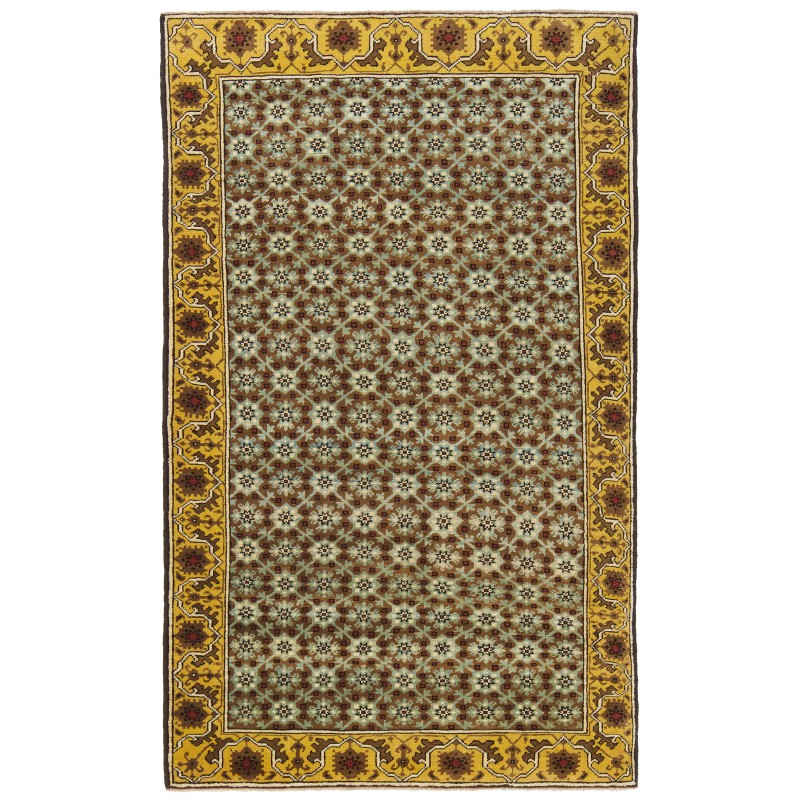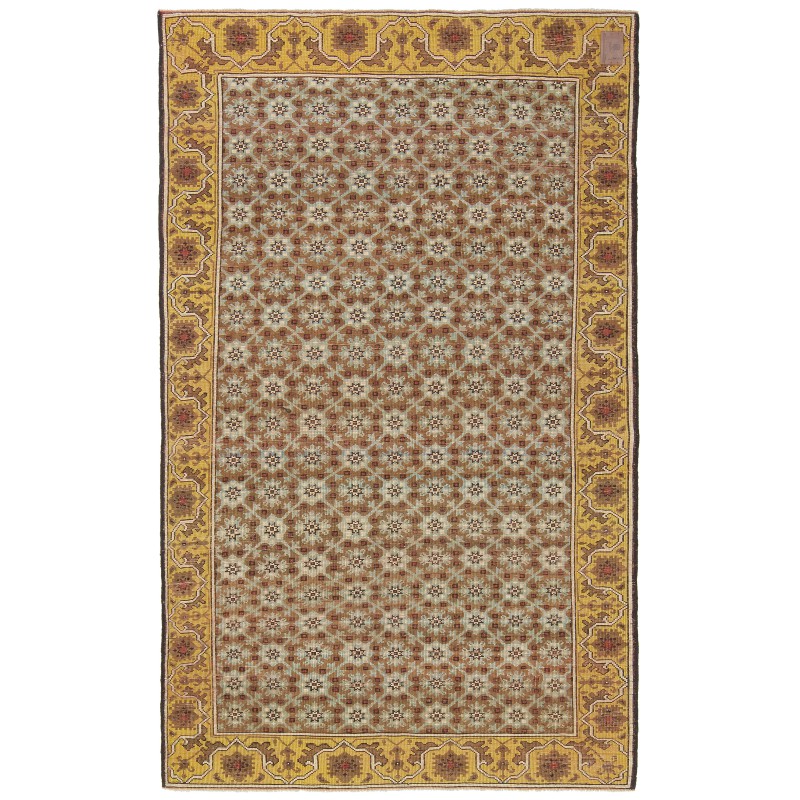



- Stock: 売り切れ
- Model: C50335
- サイズ: 210cm x 130cm
- SKU: ART335
この絨毯は、セルジューク時代の14世紀の絨毯から取られた花格子のデザインを解釈し、優雅にフィールドを埋めるように配置されています。これはセルジューク時代のトルコ、アナトリアのコンヤ地域の一部でデザインされた大きなスキームの一部であるという印象を与えます。セルジューク時代はアナトリアの美術と建築の最高点の一つを示しています。そのため、この時代のトルコ結び織りのカーペットの発見によって非常に興奮が引き起こされました。1905年には、フレドリク・ロバート・マーティン(1868-1933)によってコンヤのアラエッディン・モスクで7つの例が発見されました。アラエッディン・モスクは、12世紀中盤から13世紀中盤にかけて段階的に建設された、スルタン国の中心にある最も重要なモスクです。これらは一般的に「セルジューク」または「アーリーコンヤ」と呼ばれています(後のコンヤに帰属される他のカーペットとは関係ありませんが)、これらはまもなく最も重要な初期のアナトリアのカーペットと見なされるようになりました。彼らのパターンは建築に反映されず、セルジューク宮廷の芸術を代表するものではありません。むしろ、この時期に中央アナトリアに住んでいた遊牧または半遊牧のトルクメン族の一つの作品である可能性が高いです。したがって、これらを「セルジューク時代」と呼ぶことがより正確でしょう。そのうちの4つは大きいですが不完全で、他の3つは破片になっています。これらは1911年にイスタンブールのエヴカフ美術館に移され、その後トルコ・イスラム芸術博物館に移されました。私たちのデザイナーは、セルジュークタイプの絨毯コレクションから絨毯のデザインを解釈し、鮮やかな色彩を使用しています。
This carpet has an interpreted design composed of a flower lattice pattern taken from a part of the Selcuk carpet, filling the field elegantly, has the impression that it is only part of a larger scheme designed 14th-century rug from the Selcuk, Anatolia era, Konya region, Turkey. The Seljuk period marks one of the highest points in art and architecture in carpets Anatolia. It is therefore not surprising that tremendous excitement was caused by the discovery of two groups of Turkish knotted-pile carpets from this era. In 1905 seven examples were found by Fredrik Robert Martin (1868-1933) in the Ala’eddin Mosque in Konya, the foremost mosque at the heart of the Sultanate, which was constructed in stages between the mid-12th and mid-13th centuries. Generally referred to as the ‘Seljuk’ or ‘Early Konya’ carpets (although they do not relate to any later carpets attributed to Konya), these soon came to be considered the most important early Anatolian carpets. Their patterns are not reflected in the architecture and do not represent the art of the Seljuk court; they are more likely the work of one of the nomadic or semi-nomadic Turkmen tribes that inhabited central Anatolia at this time. Labeling them ‘Seljuk-period’ would therefore be more accurate. Four are large but incomplete, the other three are fragmented. They were transferred to the Evkaf Museum in Istanbul in 1911, and then to the Museum of Turkish and Islamic Arts. Our designers interpret the design of the rug from our Seljuk-type rugs collection and vivid colors are used for this rug.
全部で6色使っています。主な4色は以下です。
- Pullman Brown 542 (クルミの殻 - ヘナ - ザクロの皮)
- Turquoise 330 (トウダイグサ - 茜 - 藍 - クルミの殻)
- Dark Brawn 316 (羊そのままの色)
- Khaki 413 (ホザキモクセイソウ)
上の番号は私たちのカラーコードです。()の中は、主な草木染めの材料です。
